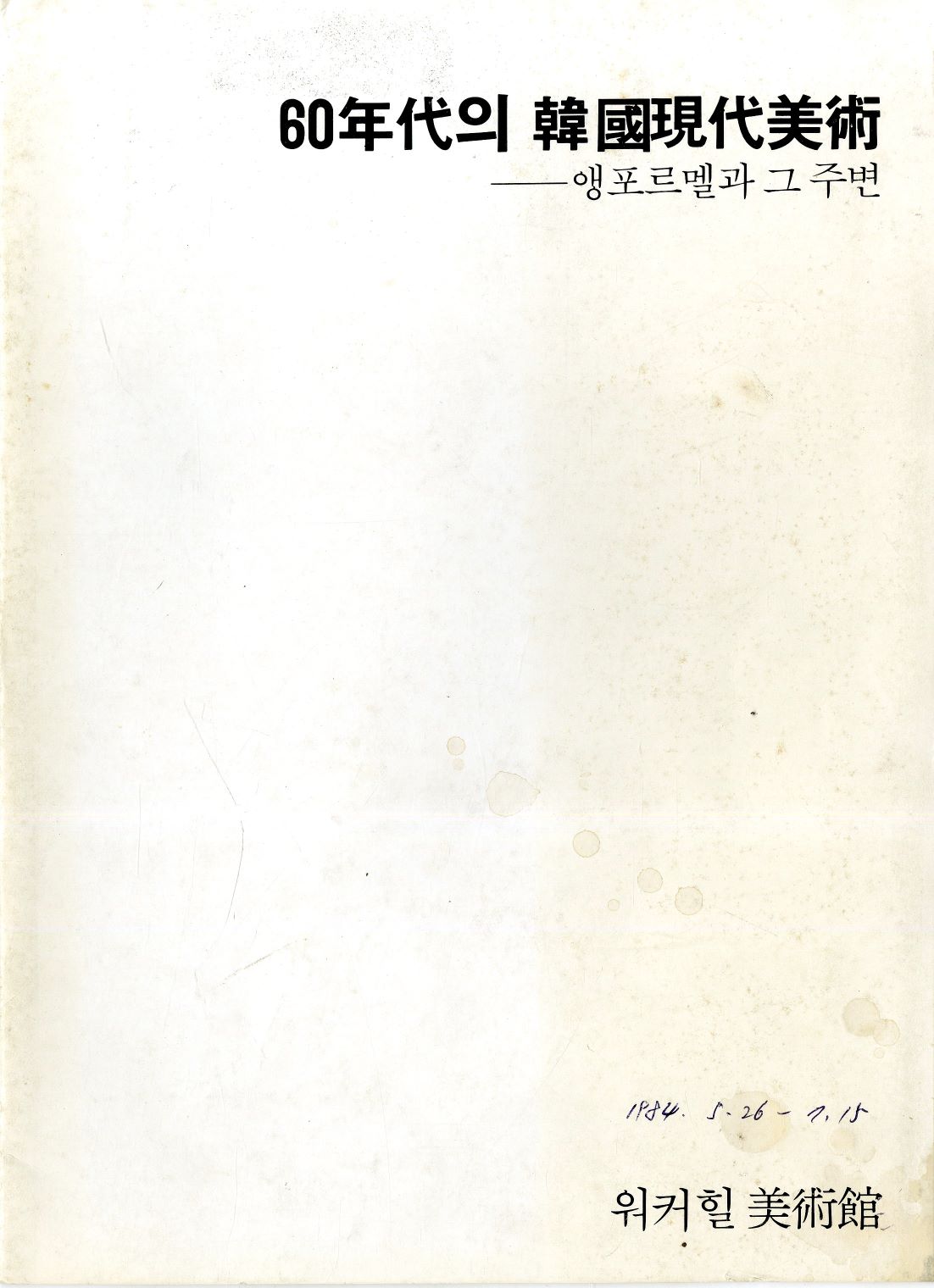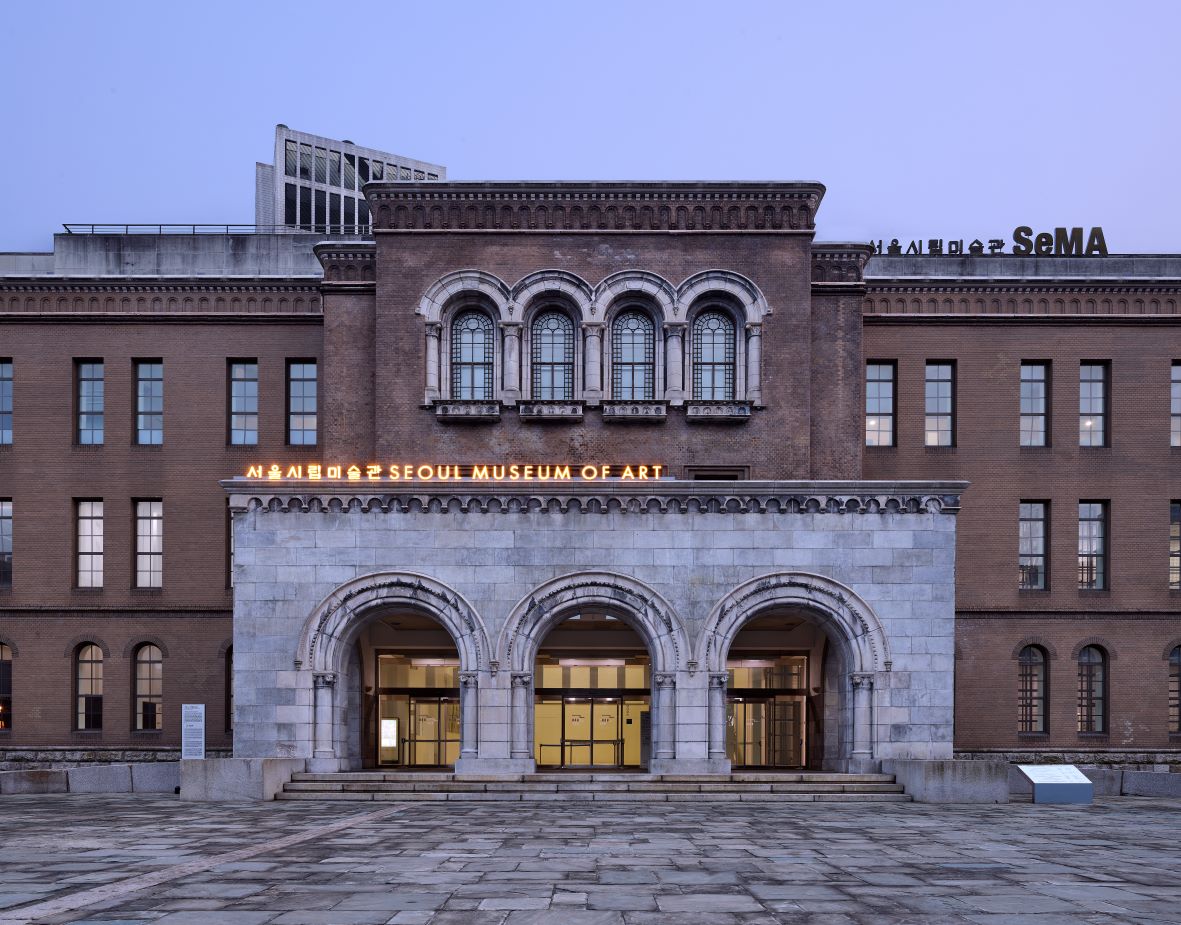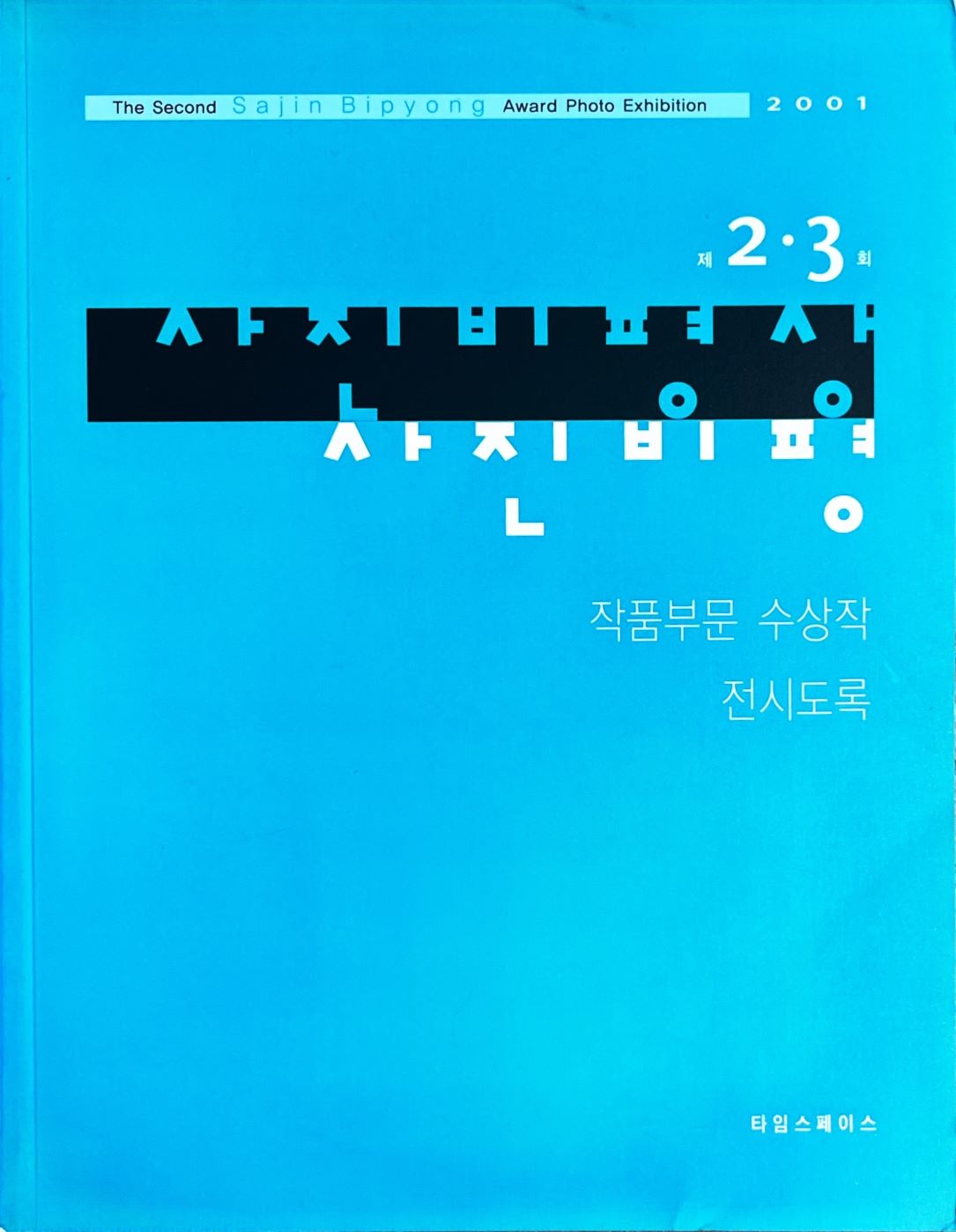
November Horizon of Korean Photography, Invitation letter, 1991 Image provided by Total Museum of Contemporary Art
Horizon of Korean Photography
* Source: Multilingual Glossary of Korean Art. Korea Arts Management Service
Related
-

Walker Hill Art Center
A private art museum established in 1984 by Park Gye-hui, the wife of the owner of the SK group, known as the Sunkyong Group at the time. The group held numerous exhibitions of Korean contemporary art such as Korean Contemporary Art in the 60s-Informel and its Surroundings and The New Wave of the Photography. The museum organized solo exhibitions for well-established international artists such as Andy Warhol, Armand Pierre Fernandez, Dennis Oppenheim, Anthony Caro, Kathe Kollwitz, and Louise Bourgeois. In addition, the museum held exhibitions on photography, print, textile art, metalwork, posters, accessories, and holography as well as performing arts such as Kim Geum-hwa’s Gut (traditional shaman performance), Japanese Traditional Music, Shakti’s Indian Dance, Kim So-hui-Heungbuga, Lee Saeng-gang Daegeum Performance, Kim Deok-su’s Samulnori (traditional dance and music performance), and the International Performance Art Festival.
-

Contemporary photography
Contemporary photography differs from a modernist approach to photography that highlighted the technical qualities of the image. Robert Frank’s photograph collection The American published in 1959, is considered a turning point in indicating a new style based on idiosyncratically cropped images and unusual focus. Contemporary photography became prevalent when conceptual art emerged between the 1960s and the 1970s. The New Wave of the Photography exhibition, which opened at the Walker Hill Art Center in Seoul on May 18th, 1988, is considered as marking the starting point of Korean contemporary photography. The Horizon of Korean Photography exhibition at the Total Museum of Contemporary Art in Jangheung, Gyeonggi-do in November 1991 provided a further turning point. The founding of galleries specializing in photography, including the Timespace, Pine Hill Gallery, and Hanmadang Gallery, has also contributed greatly to the popularity of contemporary photography in Korea. Over the last 30 years, many foreign-educated photographers like Koo Bohnchang, Kim Daesoo, Lee Juyong, Lim Youngkyun, Han Okran, and Choi Kwangho have returned to Korea and released works reflecting new trends in the medium and further enhancing its national status as a contemporary art form.
-

Seoul Museum of Art (SeMA)
Korea’s first municipal art museum, the Seoul Museum of Art was established at the site of the Gyeonghui palace park, where Seoul High School used to be located, in 1988. On May 17, 2002, the museum moved to Jung-gu, Seoul, to the former location of the Supreme Court of South Korea. In addition to the main branch, the Seoul Museum of Art also operates the Seoul Museum of Art (South), which opened on September 2, 2004; Seoul Museum of Art (North), which opened in September 24, 2013; SeMA Nanji Residency, which opened in April 2006; SeMA Warehouses, which opened in August 2016; Nam June Paik Memorial House, which opened in March 2017; and SeMA Bunker, a multipurpose art space that opened in October 2017. Notable exhibition projects of the museum include the Seoul Mediacity Beinnale, a biennial media art event held since 2000, and the Seoul Photo Festival, an annual event held since 2010.
Find More
-

Pine Hill Gallery
Pine Hill Gallery, specializing in photography, opened in February 1981 in Gwancheol-dong, Jongro-gu, Seoul. The architect Cho Sung-lyul served as president. At the time of its opening, it was named Grand Bear Gallery, but it was renamed in December 1982. After expanding its exhibition space, the gallery reopened in March 1991 in the same location. It closed in October 1995. It had a floor space of 1,423 sq ft, and its exhibitions were held through portfolio review by the advisory committee and without receiving any venue rental fee. Lee Gyeongmo, Lee Myeongdong, and Hong Soontai served as members of the advisory committee. In the early years of its operation, the gallery hosted several exhibitions on architectural photography. Later, it functioned as a major platform addressing Korean art photography in the 1980s by actively holding solo exhibitions of renowned Korean artists and publishing its own newsletters. Solo exhibitions held in its early years include Nostalgia for Park Youngsook in 1982, Seoul for Koo Bohnchang in 1983, and Exhibition of Photographs by Song Young Sook in 1984. The Pine Hill Gallery carries significance in that it introduced works in the art photography field and held solo exhibitions of noted photographers in the 1980s when photography exhibitions were not held at national and public art museums.
-

Timespace
Timespace was a photography complex that was opened in June 1984 in Seongsan-dong, Seodaemun-gu, Seoul by Im Hyang-ja, a photographer who studied in Japan, and her husband and photography theorist Kim Seung-gon. In the early 1990s it moved to Chungmu-ro in Jung-gu, Seoul and ran a photography agency and gallery. In commemoration of its opening, Timespace held the special exhibition Ansel Adams that featured original prints by the American modernist photographer Ansel Adams for the first time in South Korea. Moreover, it endeavored to facilitate exchanges of photography cultures between Korea and Japan by holding exhibitions introducing major artists in Japanese photography history, including Fujii Hideki (1934–2010), Kuwabara Shisei (1936–), and Maeda Shinzō (1922–1998). Timespace is considered to have contributed to the development and expansion of Korean photography in multifaceted ways by exhibiting works by domestic and international photographers, offering an opportunity for young photographers to present their works and portfolios, hosting photography research gatherings, and publishing its own newsletters in the 1980s when spaces specializing in photography began to emerge in South Korea.
-

Hanmadang Gallery
Hanmadang Gallery, specializing in photography, was opened by Jang Yanghwan, a photographer from the Sookmihoe photography club of Sookmyung Women’s University, in October 1983 in Junghak-dong, Jongro-gu, Seoul. It held special and permanent exhibitions on photography and rented its space for artworks without distinction of genre. Before the 1980s, photography exhibitions were held only at limited spaces like the Cultural Center of Publishers Association, the Center of the Federation of Artistic and Cultural Organization of Korea, and the Press Center of Korea. Since national and public art museums rarely hosted photography exhibitions even in the 1980s, there was an absolute lack of space for artists in the art photography field to showcase their works. One of the first galleries specializing in photography that emerged in the 1980s, Hanmadang Gallery contributed to the development of Korean photography by introducing contemporaneous art photographs and hosting special exhibitions. Ten Renowned Korean Photographers was held in 1983 in commemoration of the opening of the gallery. In 1985, the gallery organized Female Photographers that featured works by female photographers whose number was gradually growing. It also introduced early works by notable photographers by holding their solo exhibitions such as Twelve Sighs for Koo Bohnchang in 1985 and Image of the City for Lee Gapchul in 1986.






